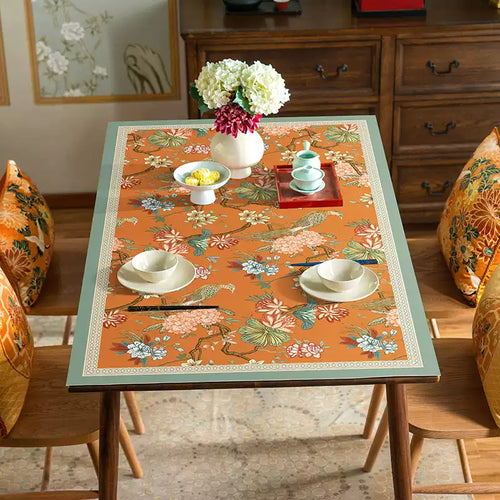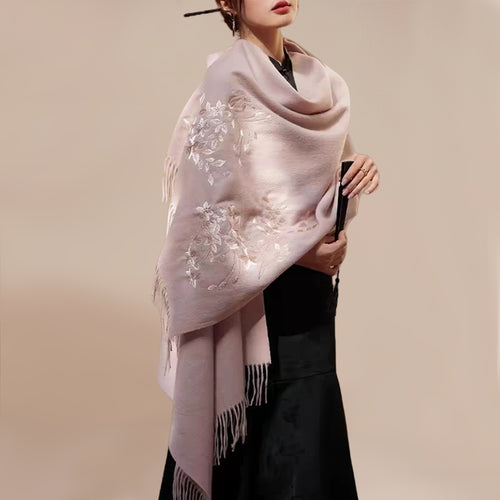Cantonese Opera, also known as "Guangdong Opera" or "Da Xi," is one of the traditional operatic forms popular in Guangdong and Guangxi provinces, as well as in Hong Kong, Macau, and overseas Chinese communities where Cantonese is spoken. It emerged during the Jiajing reign of the Ming Dynasty and is a performing art that integrates singing, recitation, acting, and martial arts, accompanied by music and elaborate costumes, embodying abstract body movements.

Each role in Cantonese Opera has distinct attire, reflecting its own unique style. Cantonese Opera was included in China's first batch of National Intangible Cultural Heritage List on May 20, 2006. It was also recognized by UNESCO on September 30, 2009, and included in the UNESCO Representative List of the Intangible Cultural Heritage of Humanity.
Historical Origins
Cantonese Opera evolved from local troupes integrating operatic styles from other provinces into Guangdong's local music and folk tunes. During the Ming Dynasty, local troupes had already established guilds like the Qionghua Guild in Foshan and Guangzhou. Over time, it blended elements of Yueyang Qiang, Kun Qiang, Cantonese folk tunes (Nanyin), dragon boat songs, woodblock music, Yue'ou tunes, and saltwater songs. By the late Qing Dynasty and early Republic of China period, it developed into a distinct regional drama with Southern characteristics, known as Cantonese Opera. Its distinctiveness lies in its blend of northern and southern vocal styles, combined with local dialects and sung in vernacular Cantonese.

Global Influence
By the mid-19th century, Cantonese Opera had spread from Hong Kong to Southeast Asia (Singapore and Malaysia). It thrived in these regions, earning Singapore the title of "Second Home of Cantonese Opera." Cantonese Opera also gained popularity internationally, referred to as "Cantonese Opera" by Westerners.

Performance Arts
Cantonese Opera performers specialize in four basic categories: singing (chang), speaking (nian), acting (zuo), and martial arts (da). Singing involves different vocal techniques depending on the character, with males typically using pingho (normal pitch) and females using ziho (falsetto). Acting (zuo) encompasses gestures, footwork, eye movements, hand gestures, and various physical expressions. Speaking (nian) refers to dialogue delivery to convey plot, character thoughts, and emotions. Martial arts (da) involves choreographed fight scenes and various weapon techniques.

Performance Techniques
Key techniques include:
- Self-Introduction: Characters introduce themselves upon entering the stage, consisting of opening lines (da yin), scene setting poems (ding chang shi), and personal monologues (zuo chang bai).
- Role Playing: Supporting roles, known as "dragon suits," play soldiers, servants, and palace maids, named for their distinctive attire.
- Dialogue: Dialogues range from soliloquies to exchanges, sometimes rhymed (poetry) or unrhymed (prose).
- Martial Arts: Known as "fighting scenes" (wu chang), emphasizing close-quarters combat, influenced by various southern martial arts traditions.

Role Classification
Costumes include:
- Makeup: Early styles used heavy makeup, but modern conventions favor lighter, more natural makeup.
- Costumes: Traditional outfits include mao (robe), kao (front of the robe), pleated skirts, kaichang (official attire), pei (collar), and yi (clothing).
- Headwear: Headpieces include pins, hats, wigs, ornaments, and other decorative elements.

Performance Venues
- Theater Tents: Early venues featured altars and shrines for religious performances. Hong Kong's tent theaters typically performed ritual dramas for worship and offerings. Structures were constructed from bamboo with iron roofs and walls, providing basic shelter.
- Stage: The stage was divided into front and back scenes with tiger gates for entry and exit. The section closest to the audience was known as the stage mouth.


Famous Repertoires
Cantonese Opera draws from folk legends, Beijing opera, Kun opera, and plays by Tang Disheng. It includes traditional works such as "The Legend of the White Snake," "The Peony Pavilion," and "The Butterfly Lovers," listed as China's first batch of national-level intangible cultural heritage. These classics have been adapted into films, television dramas, stage plays, and even musicals.

Notable Figures
- Behind the Scenes: Renowned playwrights include Tang Disheng, who influenced the genre significantly.
- Leading Performers: Prominent actors like Ren Bai, also known as Ren Jianhui & Bai Xueqian, formed the renowned "Xian Feng Ming Opera Troupe."
Cantonese Opera is a vibrant cultural heritage, blending local traditions with diverse influences from across China, making it a cherished art form both at home and abroad.





































